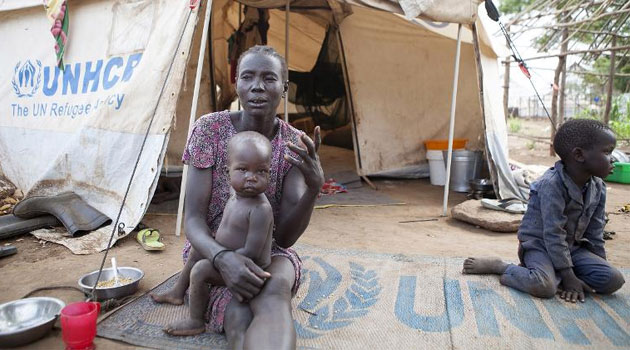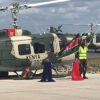
The number of people facing starvation has also risen from 2.7 million during the same time, the current estimate placed at 3.5 million/AFP FILE
NAIROBI, Kenya, Aug 23 – A report published by the United Nations Children’s Fund (UNICEF) suggests that up to 1.6 million children in the country could be food insecure, up from 1.1 million in March.
The number of people facing starvation has also risen from 2.7 million during the same time, the current estimate placed at 3.5 million.
Among these are 2.7 million people said to be in need of Water, Sanitation and Hygiene (WASH) services, particularly safe drinking water.
The number of children under the age of five facing Severe Acute Malnutrition (SAM) is estimated at 104,614.
“174,954 Children are not attending pre-primary and primary schools as a direct result of the drought,” the UNICEF Kenya Humanitarian Report published on August 4 which puts the funding gap for adequate response in 2017 at $18.2 million, reads in part.
So far, only $16.8 million has been received from donors out of UNICEF’s appeal for 41 million.
If projections by the National Drought Management Authority (NDMA) are anything to go by, there could be an upsurge in Global Acute Malnutrition (GAM) especially in counties classified as Arid and Semi Arid Lands (ASAL) in the period leading to October.
Based on NDMA’s assessment of long rains in July, most parts of Turkana are projected to face extremely critical levels (30-31 per cent) of malnutrition, with the situation classified as critical (15-29.9 per cent) in parts of West Pokot, Garissa, Mandera, Wajir and Samburu.
The situation is expected to be significantly serious (10-14.9 per cent) in Laikipia and Moyale and moderate (less than five per cent) in Kajiado, Makueni, Kilifi, Kwale and Narok counties.
According to projections by the State Department of Agriculture, the country could face a deficit of food stocks by September, the maize shortfall by end of the month projected at 114,169 metric tonnes.
The country is expected to have in its stocks about 970,069 metric tons although this could be enhanced through imports by the government, the private sector or relief agencies.
“Cumulative rainfall expected to be above average for eastern parts of the country, below average in the southeast and northern parts,” the NDMA notes in its October – December short rains forecast.
Currently, agro pastoral households hold the biggest amount of maize stock estimated at 1.8 million 90-kilogram bags, followed by coastal (425,150 bags), South East (214,350), Pastoral North East (18,960) and Pastoral North West (36,150).
In order to avert a crisis, the NDMA recommends scaling up of supplementary feeding in worst hit areas as well as the provision of water and health services to curb breakouts of diseases such as cholera.
Cash transfers and expansion of school meals programmes are also recommended to cushion the most vulnerable members of the society as well as guard against cases of school dropouts.
Security in conflict areas also needs to be enhanced since lack of it could accentuate food scarcity by making it hard for relief agencies to reach affected areas.
A case in point of stalled humanitarian action is the attack on a Kenya Red Cross Society (KRCS) convoy in February this year where vehicles carrying 96.8 metric tonnes of relief food comprising of maize flour, pulses, cooking oil and salt meant for Kapedo and Lomelo areas of Turkana county, were blocked by the residents and diverted to Marigat in Baringo county.
Following the incident that occurred at Kambi Samaki area of Baringo, KRCS Secretary General Abbas Gullet halted humanitarian response to the region citing safety concerns.
“It is with a heavy heart that the Kenya Red Cross Society announces the suspension of our activities in Baringo County, as we can no longer guarantee the safety of our staff, volunteers, and resources. Our staff and volunteers were threatened by residents despite our assurance that the consignment was headed to Turkana County, and had nothing to do with the current inter-clan conflict in Baringo County,” he said at the time.
Gullet however agreed to resume operations in the volatile region a week later following assurances of beefed up security in the belt where banditry had thrived until Deputy President William Ruto’s tour of the zone late February during which he launched an intensified anti-banditry campaign.
“We have resumed our operations and humanitarian aid in Baringo after we were assured of our security. We urge leaders from this region to inform the locals that Red Cross is nonpartisan and only offers assistance to people in dire need,” he said during a meeting held at the Kenya School of Government in Kabarnet on February 24 where stakeholders including security chiefs in the region reviewed emergency response and peace initiatives.









































